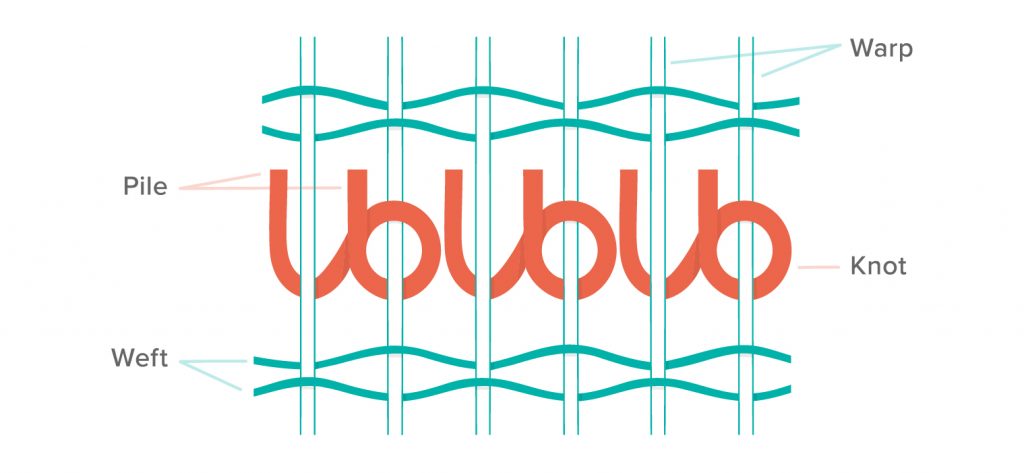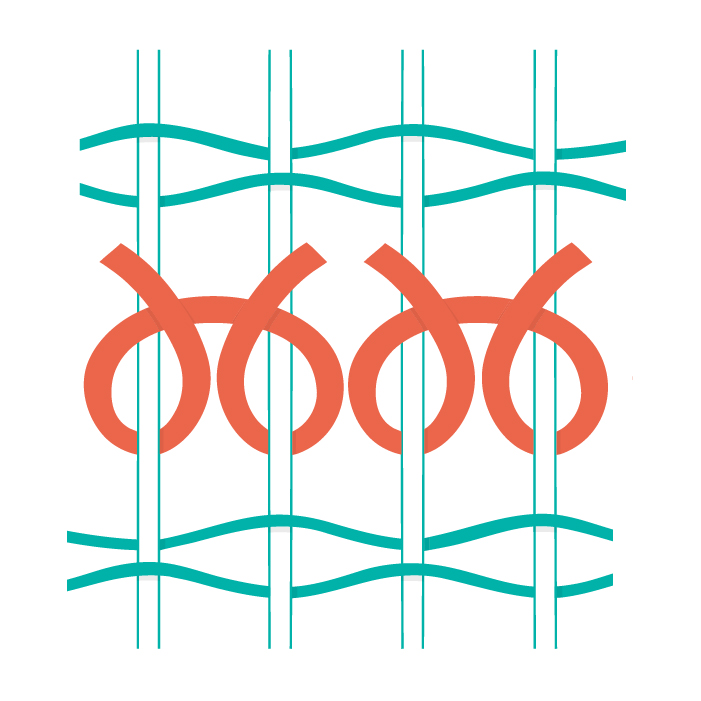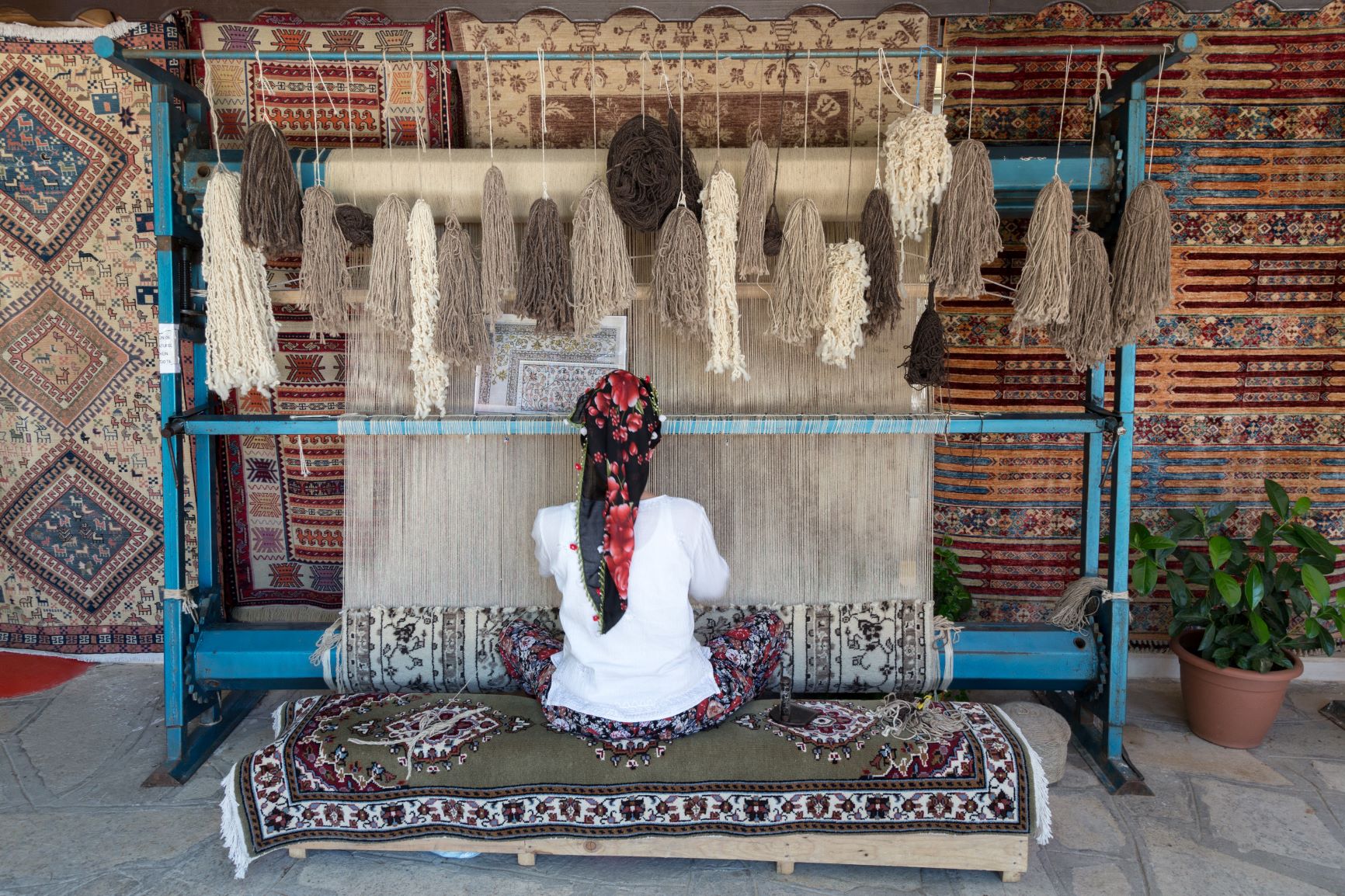If you’ve spent any time researching Persian and Oriental rugs, you’ve most likely come across the term “hand-knotted” already. Compared to machine-made rugs, hand-knotted rugs tend to be stronger and longer-lasting. The term “hand-knotted” might sound a bit self-explanatory, it doesn’t tell the whole story of these amazing rugs! There are many types of rug knot. The knots your rug uses can tell a lot about where it’s from.
How Are Hand-Knotted Rugs are Made?
The techniques used to make hand-knotted rugs go back thousands of years. How the rug is made can vary widely based on where the rug is being made. Despite this variation, the basic ideas remain the same.

The basic construction of a hand-knotted rug has three parts. (Learn more in our full guide on how rugs are made!) Cotton yarns are stretched across a vertical loom, forming the “warp” of the rug. Wool yarns are then knotted onto the warp to form the pile of the rug. Finally, the pile is secured in place with cotton yarns woven horizontally through the warp to form the “weft” of the rug.
Persian Knots vs. Turkish Knots
The type of rug knot is the main variation you’ll see in how hand-knotted rugs are made. There are two main types of knots you’ll see: the Turkish knot (also called a Ghiordes knot) and the Persian knot (also called a Senneh knot).

Turkish knots are most common in rugs made in northwestern Iran, Kurdistan, Azerbaijan, and of course, Turkey. This strong, symmetrical knot makes for a very consistent pile and is typically used in thicker carpets.

Persian knots, on the other hand, are used more often in rugs from eastern Iran, Pakistan, and India. In a Persian knot, one half is tied tightly around a warp while the other half is left loose. The resulting asymmetric knot that can be packed together more tightly than Turkish knots, making the Persian knot ideal for high knot density rugs with extremely detailed patterns.
Is One Type of Knot Better Than the Other?
Neither Turkish knots nor Persian knots are necessarily better than the other. Both types of rug knot have pros and cons, with each being better suited for the style of rug that they are used to make.
Turkish knots are particularly strong and results in a consistent pile. However, shape of the knot makes it hard to pack them too closely together. This makes Turkish knots best suited for thicker rugs with more geometric designs like those found in the Kazak rugs of the south Caucuses.
Persian knots, on the other hand, tend to be more delicate but can be packed much closer together than is possible with a Turkish knot. This makes them perfect for very fine rugs with high knot counts and fluent or curvilinear designs.
Do All Persian Rugs Use Persian Knots?
The idea that Persian rugs must use Persian knots is a common misconception. In fact, the “Persian rug” moniker is applied to any hand-knotted rug made in Iran, regardless of the knot that was used to make it.
Both Persian and Turkish knots are used in areas inside and outside of Iran. So, while it can give some clue as to where the rug was made, knowing the type of knot alone is not enough to determine whether a rug is a genuine Persian rug or an Oriental rug made in another country.
It’s Knot a Hard Choice!
The types of rug knot shouldn’t weigh too heavily on your choice of rug, but that doesn’t mean it’s not important to know! The type of knot a rug uses is part of the story of that rug and the people who made it. It can also be a good thing to ask a rug dealer to make sure they really know their stuff!
No matter if it was made with Persian or Turkish knots, when you buy a genuine hand-knotted rug from Rugs.com you can be sure you’re getting a quality piece that will last for years to come.

